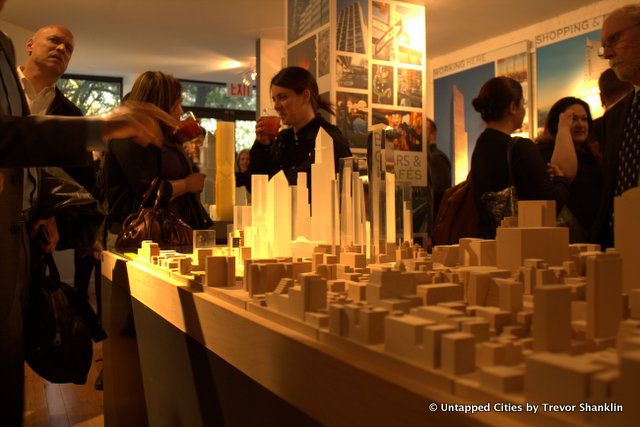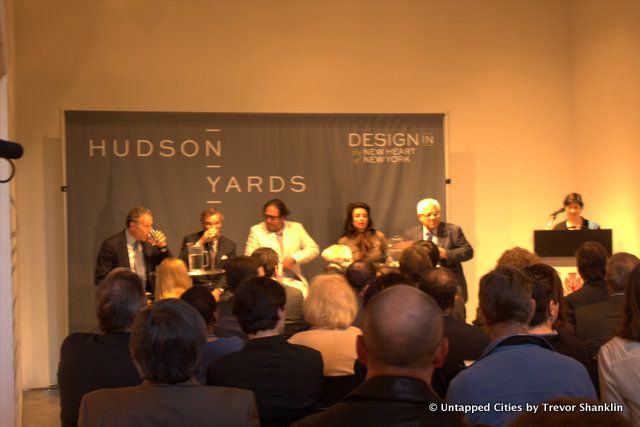Last-Minute NYC Holiday Gift Guide 🎁
We’ve created a holiday gift guide with presents for the intrepid New Yorker that should arrive just in time—


With a packed room full of eager onlookers, the Center for Architecture (CFA) kicked off the first of a series of conversations surrounding its newest exhibit Design(in) the New Heart of New York. The series, which is largely dedicated to the Related Companies’ Hudson Yards, began on Monday night with a roundtable conversation with some of New York’s most prominent real estate professionals introducing the public to the massive new development that will define what Related claims to be “The New West Side” of Manhattan.
The group began by discussing the approximately 7 million square feet of commercial space that is to be created by the project. Among those on the panel included L. Jay Cross, President of Related’s Hudson Yards; Daniel L. Doctoroff, New York City’s Deputy Mayor; Mitchell L. Moss, Professor of Urban Policy and Planning at NYU; Mary Ann Tighe, CEO of the Tri-State Region for CBRE; and Jason Sheftell, Real Estate Editor for the Daily News who served as the evening’s moderator.

Mary Ann Tighe, whose brokerage expertise seems to be unprecedented in New York City, reminded the audience that the average age of commercial buildings in New York City on average is an astounding 74 years old. “We’ve seen a drought of new [commercial] construction in recent years” she continued, saying that if New York City is going to continue to compete for new jobs, then it will require an updated commercial legacy to reflect that.
Hudson Yards will certainly do that by pioneering one of the last remaining frontiers of Manhattan. The development project site is set to include 27 acres of land, a total of 14 buildings, 13 million square feet of space split between commercial and residential uses, and approximately 10 acres of public open space with a large portion of it resting atop a massive cover over the MTA’s railyards.
Being situated in the Far West Side of Manhattan provides the Hudson Yards project with several critical advantages. “This is a neighborhood that has been screaming for commercial and retail space,” says Doctoroff. This immense pressure on the Far West Side is only to become greater with the extension of the 7 Train, from highly-residential West Chelsea, and from the old and commercially exhausted Midtown. Mitchell Moss of NYU agreed, stating “the center of gravity of Manhattan’s office space has been shifting west and south for the past 30 years” due to these affects. However, Moss couldn’t help but prod at the poor East Side, “you have a complete mess on the East Side. That’s what happens when you don’t have intelligent planning.”
That brought up an important note on what Hudson Yards, like Atlantic Yards, has either aided or detracted from New York City’s tradition of neighborhoods. With so many singular spot zoning variances and air-rights transfers, we have virtually destroyed some neighborhoods, such as the Flower and Garment Districts. Yet Hudson Yards is a master planned neighborhood where developers dictate the programming and mix of uses for millions of square feet that people. Should we not also address the emergence of master planned urban neighborhoods in this new age, in addition to the demands of commercial real estate?

Design(in) the New Heart of New York at the Center for Architecture will continue throughout the months of May and June with the next speaking event on May 16th with William Pedersen and architectural writer Joseph Giovannini about the evolution of the urban, high-rise commercial office building at Hudson Yards.
Subscribe to our newsletter